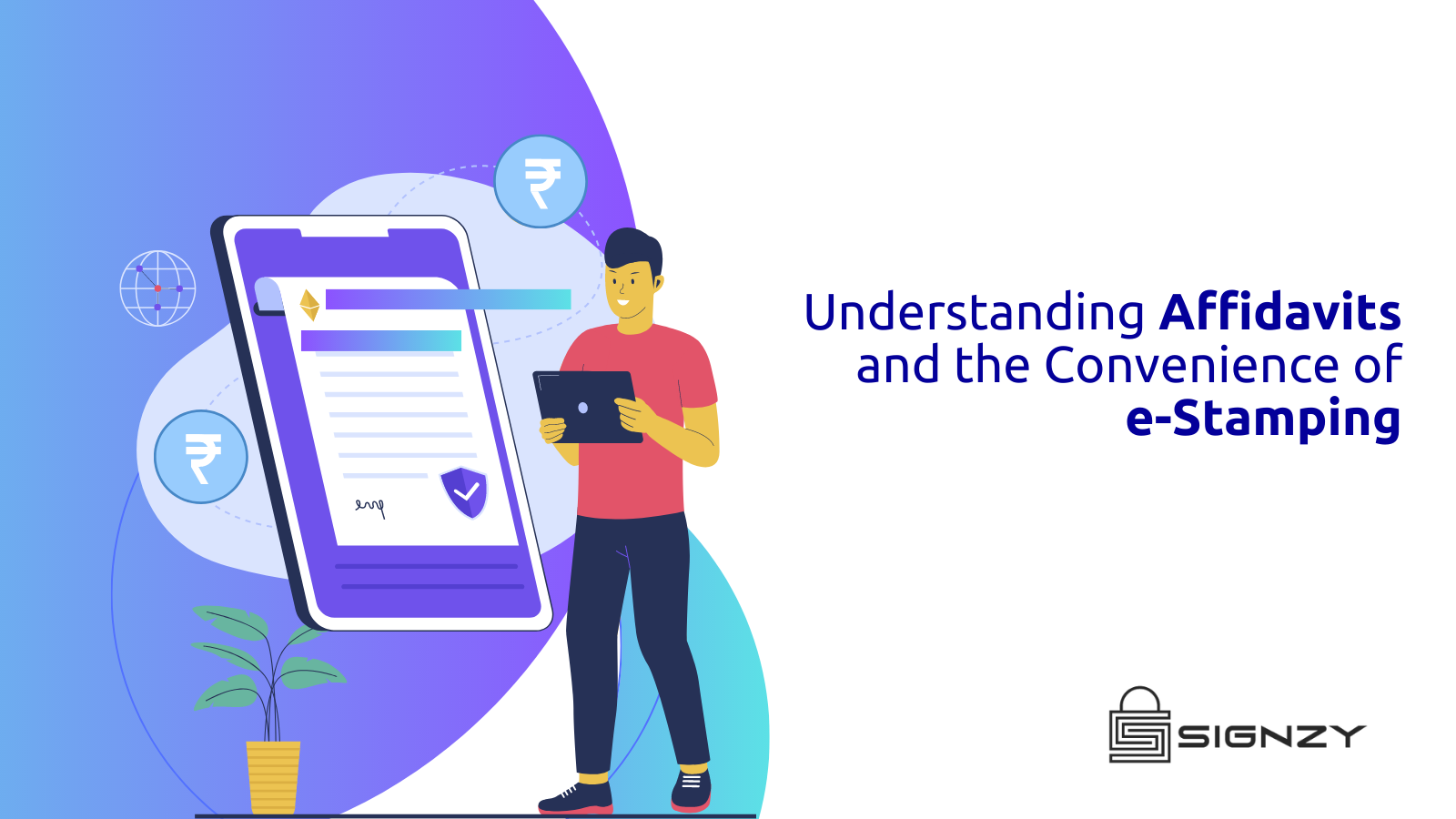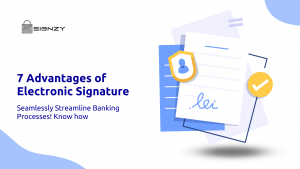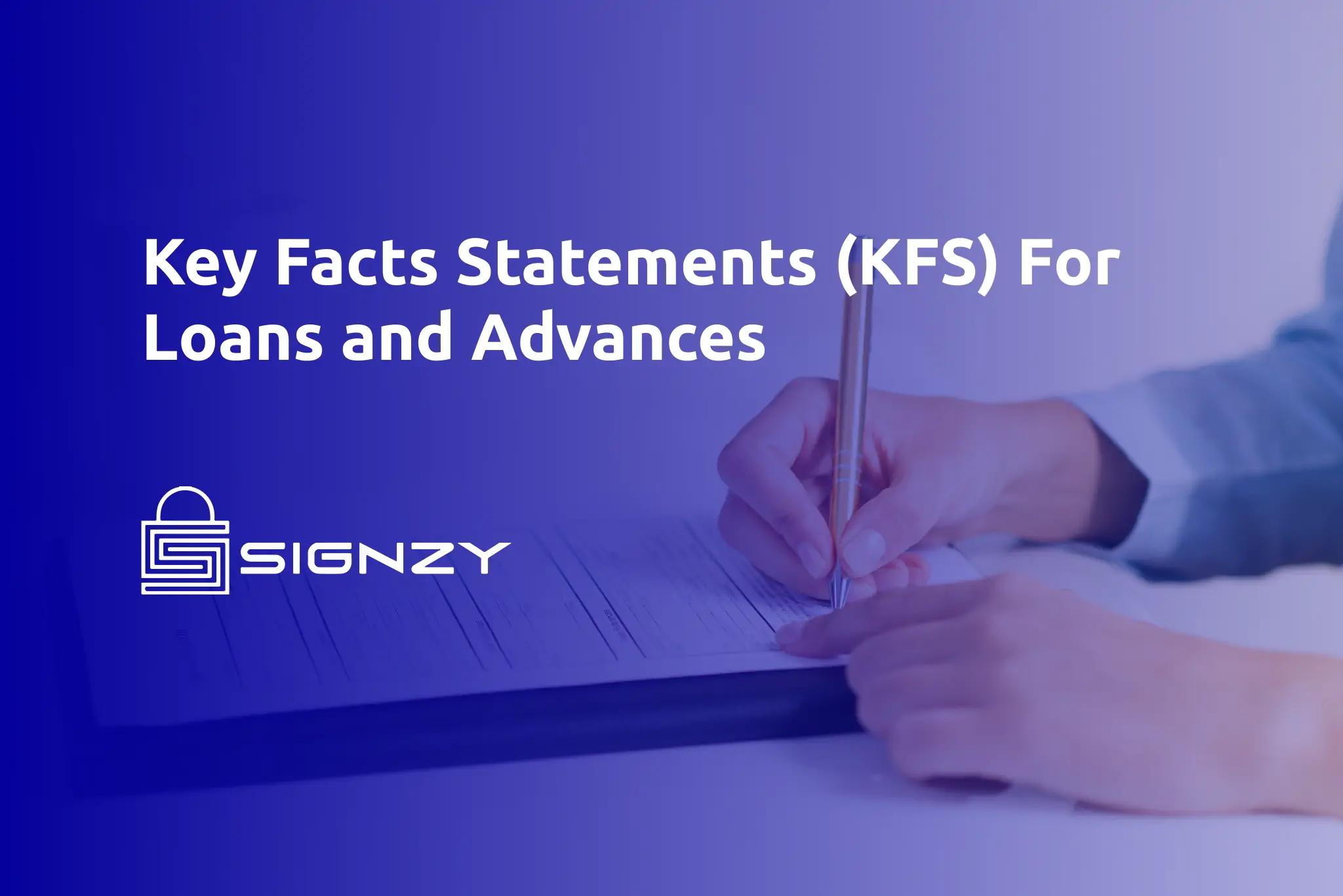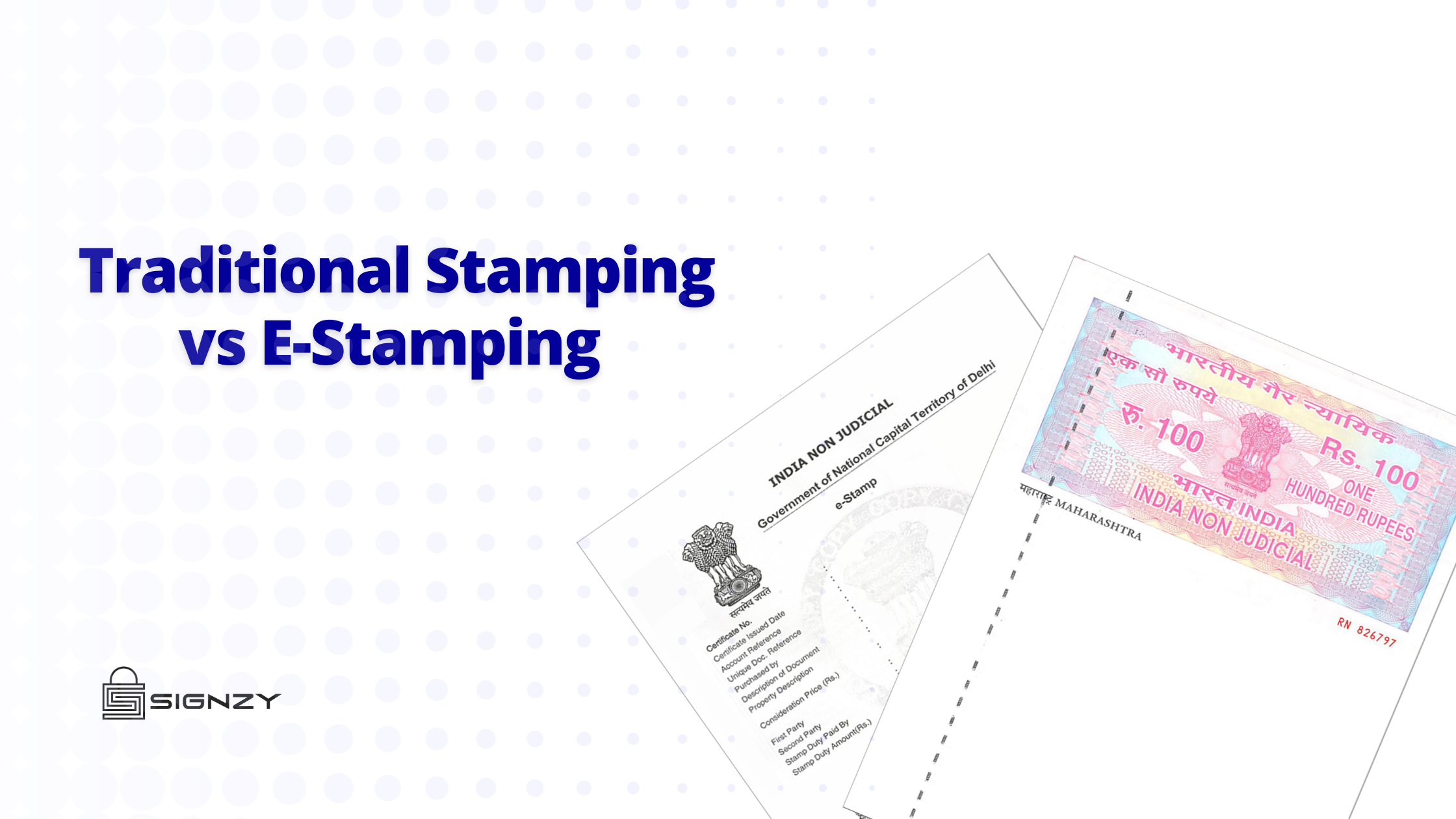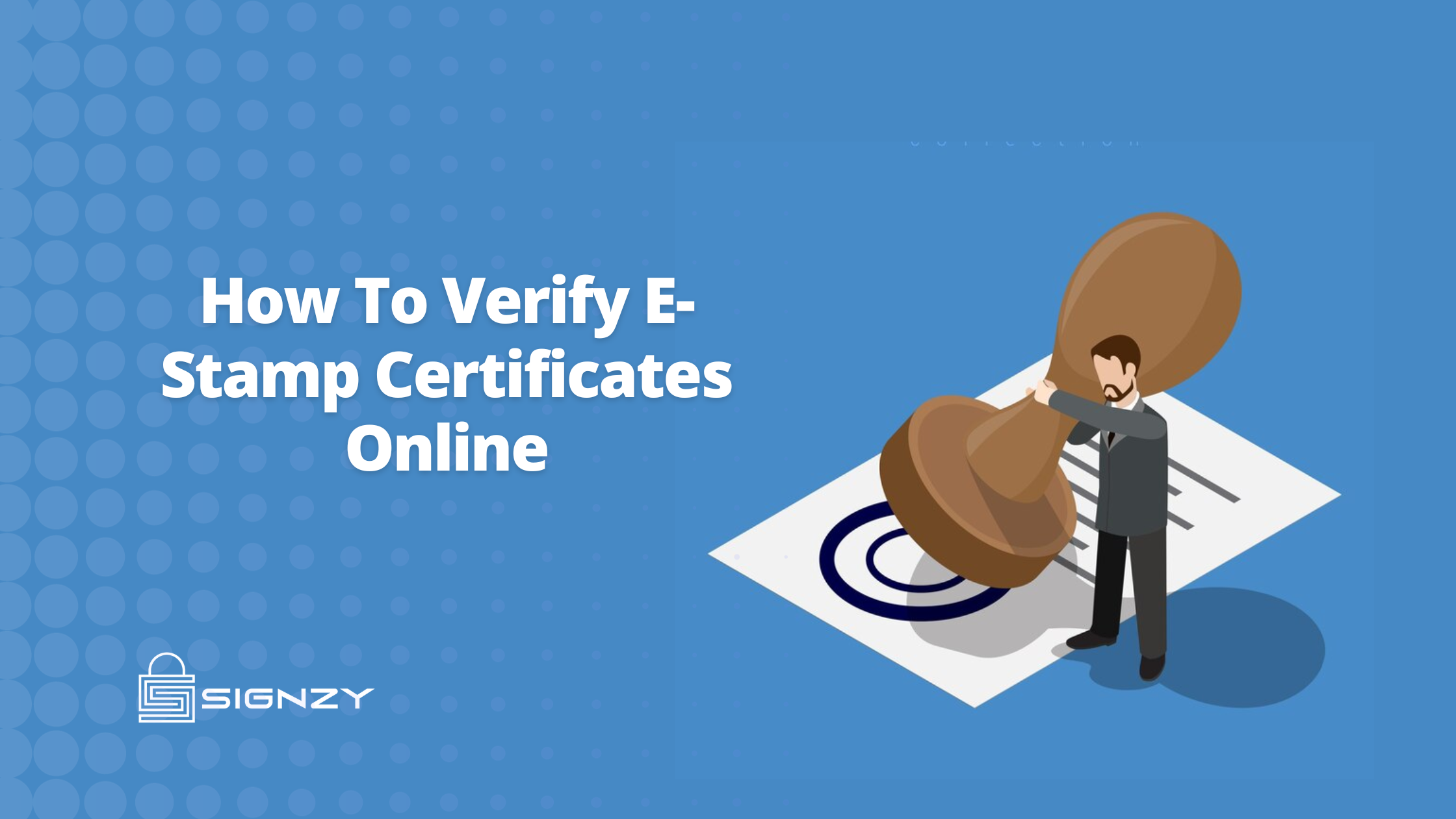Affidavits are ubiquitous in legal, financial, and administrative matters. But what exactly are they, and how can you efficiently get them e-stamped? This blog aims to provide a detailed guide on affidavits and the simplified process of e-stamping them through platforms like Signzy’s state-of-the-art eStamping API.
What Are Affidavits?
An affidavit is a written sworn statement of fact that is voluntarily made by an affiant or deponent under an oath or affirmation administered by a person authorized to do so by law. They are used to present factual information and are often utilized in legal proceedings as evidence.
The Traditional Stamping Process
In earlier times, stamping an affidavit involved going to a stamp vendor or a government office, paying the required stamp duty in exchange for a physical stamp on the document. This traditional method is time-consuming and can be cumbersome, given the need for physical presence and dealing with paperwork.
Types of Traditional Stamping Methods
Judicial Stamping
Judicial stamping is generally used for legal proceedings and court matters. These stamps are usually affixed to affidavits, court fees, and other documents that are presented in court.
Non-Judicial Stamping
Non-judicial stamps are used for transactions involving the transfer of property, business agreements, and other civil activities. Stamp papers of various denominations can be purchased from licensed vendors.
Franking
Franking involves marking a document with a special ink that signifies the payment of stamp duty. Usually, this process requires visiting an authorized bank or a franking agency.
The Process
- Identification of Document Type: Identify the type of document that requires stamping, which dictates the amount of stamp duty.
- Purchase of Stamp Papers or Franking: Depending on the type and nature of the document, one may need to buy stamp papers or go to a bank for franking.
- Document Preparation: Once the stamp duty is paid, the document is written on the stamp paper, or the franking mark is affixed to it.
- Verification: For some documents like property transfers, an additional step of verification might be required, which usually involves visits to a notary or another relevant government official.
- Record-Keeping: Traditionally, physical copies of stamped documents are stored for future reference, often leading to challenges related to storage and retrieval.
Challenges of Traditional Stamping
- Time-Consuming: The need to physically purchase stamps or get a document franked is often time-consuming.
- Storage Issues: Managing and storing paper-based stamped documents can be cumbersome and risky.
- Fraud Risks: Physical stamps can be susceptible to counterfeiting and fraud.
- Lack of Transparency: Manual methods often lack a centralized tracking system, leading to transparency issues.
Traditional Stamp Duty Payment for Affidavits
The conventional way of paying stamp duty for affidavits involves a manual process that often includes visiting a government office or authorized stamp vendors. It entails purchasing physical stamps or getting the document franked, both of which demand time and often involve long queues and cumbersome paperwork.
The Steps Involved
- Determining Stamp Duty: The first step usually involves understanding how much stamp duty needs to be paid for the particular affidavit. This amount can vary depending on the type of affidavit and the jurisdiction in which it is being submitted.
- Purchasing Stamps: After determining the stamp duty, you must visit an authorized stamp vendor or government office to purchase the required stamp papers or revenue stamps. This often involves standing in long queues and filling out forms.
- Document Drafting: Once the stamps are purchased, the affidavit is drafted on the stamp paper itself or is affixed with revenue stamps. The document is then notarized to give it legal standing.
- Submission and Storage: The stamped and notarized affidavit must be submitted where required. Additionally, you may need to keep a copy for your records, which adds to the paperwork you must manage and store.
Challenges of Traditional Methods
- Inefficiency: The traditional method is highly manual, requiring multiple in-person visits, which can be time-consuming and inefficient.
- Risk of Errors: Handwritten or typed documents are more susceptible to errors, which could render them invalid, requiring the entire process to be redone.
- Lack of Security: Physical documents and stamps are subject to wear and tear, loss, or even forgery.
- Administrative Burden: Managing physical documents becomes increasingly difficult as they accumulate, posing a challenge in storage, retrieval, and verification in the future.
The Need for Modernization
As our world increasingly moves towards digitization, it’s becoming clear that the traditional stamp duty payment method for affidavits is out of step with the needs of a fast-paced, digital society. There is a growing demand for more streamlined, secure, and efficient ways to handle this crucial aspect of legal and administrative work.
How Does E-Stamping Work?
E-stamping is an online process that replaces the traditional method of physical stamping. It’s secure, quick, and can be done from the comfort of your home or office. Platforms like Signzy provide APIs that facilitate the e-stamping process, eliminating the need to visit any government office or stamp vendor.
Advantages of E-Stamping Over Traditional Methods
- Convenience: One of the biggest advantages is the convenience it offers. You can e-stamp a document anytime and anywhere.
- Security: E-stamping is generally more secure than traditional stamping methods. The data is encrypted, and the process is fully compliant with existing laws.
- Efficiency: The process is much quicker than traditional methods, saving both time and resources.
How Signzy’s E-Stamping API Simplifies the Process
Signzy’s eStamping API aims to revolutionize the traditional stamping process. It provides a secure, quick, and convenient way to affix digital revenue stamps on your affidavits, effectively eliminating geographical and time limitations. The API allows for a more streamlined, paperless, and secure method of validating your legal documents. With Signzy, you can focus more on what matters and worry less about the administrative hassles.
Conclusion
Affidavits play a critical role in various legal and administrative procedures. The introduction of e-stamping has significantly simplified the process of validating these crucial documents. With platforms like Signzy’s eStamping API, you can now enjoy a more secure, efficient, and convenient way of handling affidavits. Say goodbye to long queues and hello to the future of document validation.
To get started with e-stamping your affidavits, visit Signzy’s eStamping Platform. Don’t miss out on the future of easy, secure, and efficient affidavit handling. Try Signzy’s eStamping API today! Contact us now!
